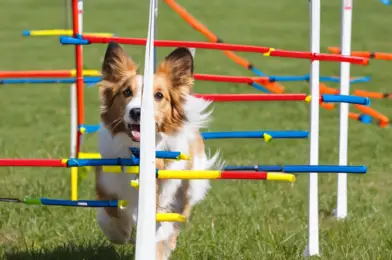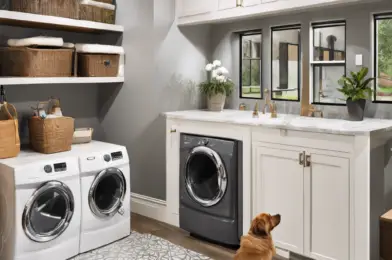Dog agility is an exciting and challenging sport, and one of its most iconic obstacles is the weave poles. Weave pole training is a critical part of every agility dog’s journey, but there’s a common question that often arises: should you opt for fixed or adjustable spacing between the poles? This decision can significantly impact your training approach and your dog’s performance.
Fixed spacing weave poles maintain a consistent distance between each pole, typically set at 24 inches (or 21 inches for smaller dogs). This arrangement is ideal for competition readiness, as it aligns precisely with official agility course standards. Dogs trained on fixed spacing learn to execute precise and accurate weaves, ensuring they meet the requirements of agility trials. The consistency of fixed spacing helps dogs develop muscle memory and a clear understanding of the task, making it a preferred choice for many handlers aiming for precision and regulation-compliant performance.
On the other hand, adjustable spacing weave poles offer a unique advantage: flexibility. These poles can be moved closer or farther apart, customizing the challenge according to your dog’s training needs. This feature is particularly beneficial for beginners, as you can start with a wider gap and gradually narrow it down as your dog becomes more proficient. Adjustable spacing allows for a tailored training approach, accommodating various learning curves and individual dog capabilities.
So, which one should you choose? If you prioritize preparing your dog for official agility competitions, fixed spacing is the way to go. It provides a realistic training environment, ensuring your dog masters the exact skill sets required in real-world competitions. However, if you’re more focused on foundational training and teaching your dog the basics, adjustable spacing can be a valuable tool. It offers a forgiving learning curve, allowing you to adapt the challenge to your dog’s comfort level and gradually build their confidence.
Many dog trainers advocate for adjustable spacing, especially for initial training stages. Starting with a wider gap enables dogs to learn the correct pattern and rhythm without feeling overwhelmed. As they become more skilled, the spacing can be adjusted to the standard distance, helping them transition smoothly to competition-ready weaves. This method can build a strong foundation and ensure your dog fully grasps the concept before tackling the fixed spacing challenges.
In conclusion, the debate between fixed and adjustable spacing for weave poles ultimately depends on your training goals and your dog’s current skill level. Adjustable spacing is excellent for beginners, while fixed spacing is essential for competition-focused training. Consider your dog’s needs, and remember that a well-thought-out training plan can incorporate both to provide a comprehensive learning experience.










